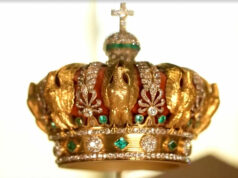Habi fair’s fulfillment of dreams: both shoppers’ and weavers’
TEXTILES carry our dreams and aspirations within them. When we use these textiles: to cover our furniture, or else our bodies, we seek to camouflage the baser aspects of life and seek to be seen with the added value that the textiles project.
Dozens of dreams for shoppers and exhibitors alike came true last weekend in the Likhang Habi Textile Fair, organized by Habi: The Philippine Textile Council. Over 80 exhibitors participated in this year’s fair, it’s eighth iteration. Laida Lim, the organization’s president, said that it’s bigger this year, in fact, it’s biggest to date: they’ve invited weavers from Malaysia, Vietnam, Myanmar, and Indonesia, some of whom they met while at the ASEAN Traditional Textiles Symposium. Ms. Lim says that they each found common ground in their problems to preserve traditional textiles.
“Our main problem for the weavers themselves is marketing,” said Ms. Lim. “This is one thing that they have to learn.” This she says, covers branding, quality control, and fair and correct pricing for all concerned.
“This is why we do this fair, so the weavers themselves can have that experience,” she said. “In that exchange, they get to improve their product.”
The organization occupied the main atrium of Glorietta, and that between Glorietta 1 and 2: “I asked for the other and they gave it,” recalls Ms. Lim.
Not just cloth and textiles were up for sale in the fair that ended on Oct. 14: among the roster as well were jewelers versed in traditional craft: think brass bells from the T’boli, and antique brooches and necklaces, or brooches and rings inspired by animals and creepers, all the way from Camarines. “We like to invite people who are trying to protect certain crafts,” said Ms. Lim.
“The year before last year, we started vetting [participants],” she said. Before, they invited just whoever they came across, but have now decided to have a sharper focus. “That focus is, preferably (tapping) the producer directly, so we don’t have the middleman. You want the producer [to shine].”
Going around the exhibitors’ booths, one would notice that while they used traditional fabrics and techniques, some of the garments were of a modern quality: think embroidered bomber jackets in the style of the barong. “The weaving technique is still the same. We’ve always wanted to level up to something further. If it’s just like that,” said Ms. Lim, and then she gestured to a bolt of fabric displayed near her, “They’ll say, ‘What are we going to use that for?’”
“We’re encouraging people to wear it for everyday,” she said. Of course, Ms. Lim draws the line at using sacred fabrics — death blankets and the like — for say, cocktail dresses. “You have to be careful about use.”
There was also an exhibit on Philippine cotton at the fair, and Ms. Lim said with some pride that one of their advocacies, the promotion of Philippine cotton, has achieved its goal. “We’ve gotten to the point where farmers are growing cotton, and we’re buying that cotton,” she said. According to her, the fate of traditional textiles is tied to the natural fiber: when farmers abandoned cotton in the Ilocos to grow cash crops like tobacco, the volume and the quality of the textiles went down as well. Now, with the revival of cotton in the horizon, they’ve even managed to spin the cotton for use in the traditional textiles. The next step for the organization is to grow and spin cotton which is competitive with imported strands.
In the eight years of Likhang Habi, Ms. Lim prefers to tell its successes through stories. Among the nonprofit’s goals is to promote, preserve, and catalogue Philippine textiles, but Ms. Lim talked about a weaver who has been in the fair for three years now. The first time, Ms. Lim said that the weaver was shy, but on her third year, “She’s really out there!”
“That’s the kind of stories that we would like to tell: that the weavers have developed into entrepreneurs.” — Joseph L. Garcia



